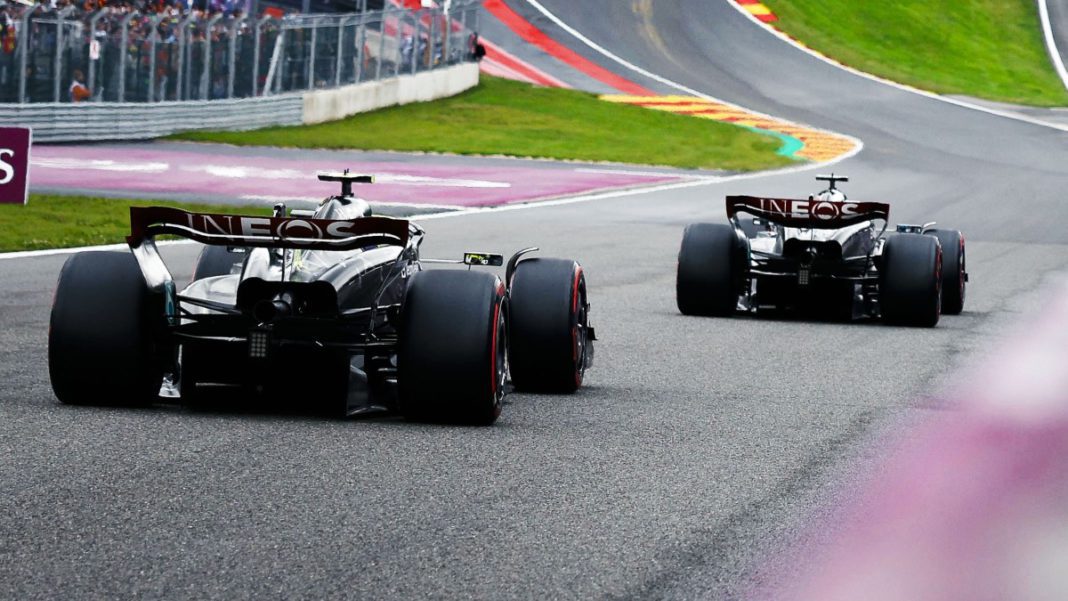BELGIUM: In a candid revelation, Mercedes’ Chief Technical Officer, Mike Elliott, acknowledged the team’s misstep in grappling with the 2022 Formula 1 regulations, leading to their car’s performance woes.
In an interview, Elliott discussed the intricate balance between aerodynamics and ride height, shedding light on the challenges that teams face under the revamped ground-effect aerodynamics regulations.
The Formula 1 landscape underwent a seismic shift in 2022, embracing ground effect aerodynamics to promote closer racing and enhance overtaking opportunities.
However, this transition inadvertently introduced the issue of ‘porpoising,’ a jarring bouncing motion experienced by cars due to their proximity to the track surface while generating downforce.
Mercedes, a formidable force in the sport, was plagued by this phenomenon during the previous season. Elliott admitted that the team’s relentless pursuit of performance caused them to place the W13 too close to the track surface, leading to adverse effects.
Elliott explained, “For these cars, aerodynamically, they want to run close to the ground. And so, if you run them close to the ground, you have to run them stiff, and that’s one of the traps we fell into last year, if we’re honest.”
The delicate balance between ride height and performance has proven challenging under the constraints of the new regulations. Teams must now choose between running the car lower for better aerodynamics or raising it for increased driver confidence. This dilemma has been compounded by Formula 1’s budget cap and aerodynamic testing restrictions.
Despite these setbacks, Mercedes has managed to narrow the performance gap to their 2022 rivals, Red Bull Racing. The team’s rigorous learning process throughout 2023 has positioned them optimistically for the upcoming winter, as they work towards refining their strategies and preparing for the next season.
Elliott commented on the strategic approach necessary in the current environment: “You have to sort of pick a direction and go in it, and as you learn, you can tweak that direction and move it slightly. I like to think we’ve sort of gotten ourselves into the right place for the winter.”
As the Formula 1 community watches Mercedes’ journey to reclaim its dominance, the lessons learned from their ‘trap’ in 2022 will undoubtedly shape the team’s future endeavours, emphasizing the intricate balance between innovation and adherence to regulations in the world of motorsport.
Also Read: Former F1 Driver Montoya Dissects Verstappen and Hamilton’s Success: ‘Best Car’ Reigns Supreme



